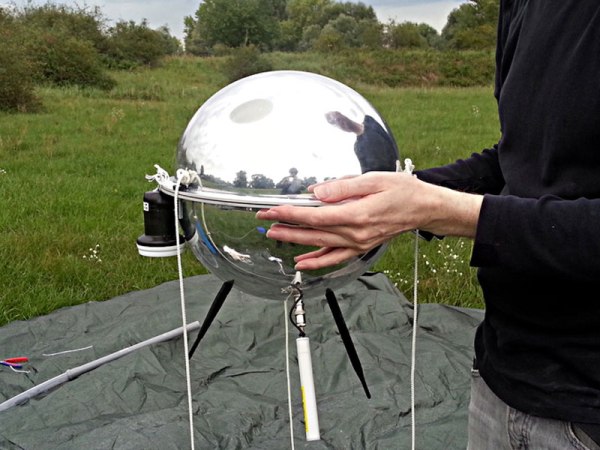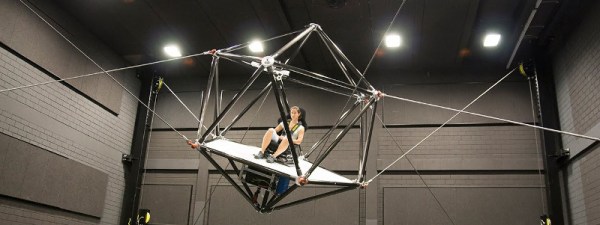For most of us, hacking is a hobby, a pleasant diversion from reality. Yes, a lot of us work on projects which have the potential to change the world – witness the 2015 Hackaday Prize semifinalist list. But in general, almost any of us could walk away from the shop at any time without dire consequences. Indeed, that’s the reason a lot of our work benches are littered with projects started with the best of intentions but left unfinished for lack of funds, lack of interest, or lack of time. We’re free to more or less willingly shelve a project and come back to it whenever we please, or not at all.
But not everyone has that luxury. For some people, hacking is much more than a hobby – it’s a means of survival. Sometimes people are thrown into situations where they have to cobble together a solution to an immediate problem with whatever is at hand, when the penalty for failure is much higher than a cluttered bench and a bruised ego. I’ve already covered one such case, where biohacked insulin saved hundreds of lives in occupied Shanghai in WWII.
In this occasional series I’ll explore historical cases where hacking really counted; cases where lives were saved or improved by a hack performed under desperate conditions.
A Bustle in the Hedgerow
Unsurprisingly, war offers a lot of opportunities for field expedient solutions under dire circumstances, and battlefield conditions might be the most extreme example of hacking when it counts.
In the early days of the Invasion of Normandy during WWII, Allied forces were having a difficult time dealing with the bocage terrain of northern France. A mixture of pasture and woodland, the Normandy bocage was a natural killing field for Allied tanks because the woodlands took the form of hedgerows – earthen dikes topped with thick tangles of brush. Hedgerows separated pastures and kept livestock controlled, but also made things tough on infantry and mechanized cavalry alike. Climbing the steep hedgerows exposed the vulnerable bottom hull of the tanks to enemy fire, and waiting for engineers to demolish the hedgerows with explosive made them sitting ducks for German artillery. The Allied advance was seriously hampered by the hedgerows, and both men and materiel were being winnowed down from fixed German positions chosen specifically to take advantage of the bocage terrain.

Enter Sgt. Curtis Grubb Culin III. Sgt. Culin, a tanker himself, was acutely aware of how vulnerable he was in his Sherman M4. The hedgerows were the problem, one apparently known to Allied command prior to the invasion for which no provision had been made. In the tradition of soldiers at the front of every battle throughout history, Sgt. Culin and his fellow tankers had to improvise a solution.
While kicking around ideas, one of the men suggested setting saw teeth on the front of a tank to cut through the hedgerows. He later attributed the comment to “A Tennessee hillbilly named Roberts”, and it was met with general laughter from the group as a crackpot scheme. But Sgt. Culin saw the potential in the idea, and began to develop it into a prototype.

Raw materials for his prototype were not hard to come by. Czech hedgehogs, giant anti-tank barriers made of crossed steel beams, still littered the Normandy beaches. The failed German defenses were harvested with a cutting torch and welded to the underside of a tank to form a series of “tusks” across the hull between the tracks. Equipped with these tusks, the tank could now blast through the tangled roots of the brush-covered earth of the hedgerow dykes.
When demonstrated for General Omar Bradley, he was impressed enough to order them built in quantity for the tanks. Eventually the prototype became an engineered product (dubbed the “Culin Rhino Device”) that was fitted to many tanks before being shipped over from England. Rhino-equipped tanks ripped across Normandy and shredded the German battle plan, which assumed the hedgerows would funnel Allied forces through heavily defended chokepoints.
Without Sgt. Culin’s battlefield hack, and his inspiration by a hillbilly named Roberts whom history otherwise forgets, the invasion of Europe might have taken a very different course. The fact that he did the hack while under fire makes it all the more impressive, and is a perfect example of hacking when it counts.
Know of any more examples of hacking when it counts? Send us a tip for use in a future Hacking When it Counts article.
[Main image of Czech Hedgehog by Jesse CC-BY-SA 3.0]






















